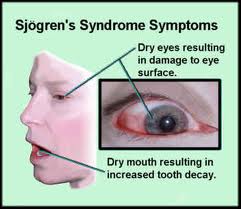 More women work out at coed gyms and are comfortable sweating side by side with men. But what about the women's locker room? A recent study found that when it comes changing in the locker room, the acts of disrobing, dressing, showering and being naked in front of others, can be very discomfiting. It's a complex experience as women are faced with an awareness of their bodies different than in any other space. Some women seek privacy while others are very comfortable changing in front of others.
More women work out at coed gyms and are comfortable sweating side by side with men. But what about the women's locker room? A recent study found that when it comes changing in the locker room, the acts of disrobing, dressing, showering and being naked in front of others, can be very discomfiting. It's a complex experience as women are faced with an awareness of their bodies different than in any other space. Some women seek privacy while others are very comfortable changing in front of others.
Author Marianne Clark, a doctoral student in the Faculty of Physical Education and Recreation at the University of Alberta, says it was her own experience as a dancer and frequent user of fitness facilities with public dressing rooms that led her to explore how other women felt. "Using these facilities, I've always felt an unarticulated discomfort," says Clark.
The act of undressing and being naked, and particularly where there is the potential to be observed by others, can be daunting. Undressing in front of others, can, according to Clark, "disrupt" our experience of ourselves, because it reveals an intimate self we don't usually freely display.
According to Clark, one woman described being pre-occupied walking into the gym, then suddenly becoming aware of the presence of others in the change room and being reluctant to reveal her more intimate self. She said, "I angle my body this way and that as I undress and dress in the locker room. I look down to button my pants, I see my small breasts, my protruding stomach, no longer held in, contained and covered by my control top nylons and stylish skirt. This naked me is almost unfamiliar to me, so different than who I am all day, when I march around and am busy and efficient and in charge. But now, as I stand practically naked in the change room, no one can see that part of me, all there is to see is my body."
Not every woman feels this sense of discomfort. Some found the experience of being surrounded by many other women's bodies together after a workout comforting. "I like the time in the change room after a workout," said one participant. "I like being in a space where my body is just a body among other bodies. I know people might see me naked or partly naked but it doesn't bother me, this is who I am, this is my body, this is how I am in the world. I like being around all these other women of all shapes and sizes, it makes me feel connected to who I am, and somehow close to them."
"Women also talked about their body as an entity over which they have no control - it was sagging or aging, or it just did not comply with standards of conventional beauty. And while they were OK with that, they didn't want anyone else to see it."
Many women said they first became self-conscious about their bodies while teenagers. "A lot of the women I spoke to, if not every single one of them, could recall feeling painfully self-conscious in phys-ed class and said changing in the fitness centre reminded them of changing after gym class at school," says Clark.
Also, in North American society where the "body beautiful" is celebrated - both dressed and undressed, as something to look at and a reason to be seen - its ideal is young, thin and toned. Clark said she found plenty of social and cultural layers in the women's stories that indicated their awareness of the societal notions of beautiful, healthy bodies influenced their own feelings about the shared undressing experience of the change room. "I think even in the change room, women are carrying with them these knowledges and understandings (of the fit female body) that society has constructed," she says.
Readers, want to wade into this discussion? Do you have locker room anxiety?
Source:
University of Alberta - Faculty of Physical Education and RecreationUniversity of Alberta - Faculty of Physical Educat. (2012, March 19). "Public Changing Rooms Can Cause Body Anxieties For Women." Medical News Today. Retrieved from
http://www.medicalnewstoday.com/releases/243014.php.
 Just 38 percent of sexually active young women were screened for chlamydia in the previous year in the United States, according to the US Centers for Disease Control and Prevention. CDC recommends annual screening for all sexually active women aged 25 and under. If recent policies related to health care reform that focus on preventive care are cut, this problem could become worse.
Just 38 percent of sexually active young women were screened for chlamydia in the previous year in the United States, according to the US Centers for Disease Control and Prevention. CDC recommends annual screening for all sexually active women aged 25 and under. If recent policies related to health care reform that focus on preventive care are cut, this problem could become worse.
 The Centers for Disease Control and Prevention (CDC) estimates that 1 in 88 children in the United States has been identified as having an autism spectrum disorder (ASD), according to a new study released today that looked at data from 14 communities. Autism spectrum disorders are almost five times more common among boys than girls – with 1 in 54 boys identified.
The Centers for Disease Control and Prevention (CDC) estimates that 1 in 88 children in the United States has been identified as having an autism spectrum disorder (ASD), according to a new study released today that looked at data from 14 communities. Autism spectrum disorders are almost five times more common among boys than girls – with 1 in 54 boys identified. More women work out at coed gyms and are comfortable sweating side by side with men. But what about the women's locker room? A recent study found that when it comes changing in the locker room, the acts of disrobing, dressing, showering and being naked in front of others, can be very discomfiting. It's a complex experience as women are faced with an awareness of their bodies different than in any other space. Some women seek privacy while others are very comfortable changing in front of others.
More women work out at coed gyms and are comfortable sweating side by side with men. But what about the women's locker room? A recent study found that when it comes changing in the locker room, the acts of disrobing, dressing, showering and being naked in front of others, can be very discomfiting. It's a complex experience as women are faced with an awareness of their bodies different than in any other space. Some women seek privacy while others are very comfortable changing in front of others. If your eyes and mouth feel as dry as a desert, there are many possible causes, such as bad air quality and certain medications. But if you have long-lasting, uncomfortable dryness in your eyes and mouth, along with fatigue or pain and swelling in some of your joints, you may have a condition called Sjögren’s syndrome.
If your eyes and mouth feel as dry as a desert, there are many possible causes, such as bad air quality and certain medications. But if you have long-lasting, uncomfortable dryness in your eyes and mouth, along with fatigue or pain and swelling in some of your joints, you may have a condition called Sjögren’s syndrome. A year ago our Institute hosted a private showing of Hot Flash Havoc, an award winning documentary on menopause. The long awaited release of this film in U.S. theaters begins later this month. To learn more about the sites and dates, visit the film
A year ago our Institute hosted a private showing of Hot Flash Havoc, an award winning documentary on menopause. The long awaited release of this film in U.S. theaters begins later this month. To learn more about the sites and dates, visit the film  Last week Senator Barbara Mikulski of Maryland became the longest serving US Congresswoman! She was elected to the US House of Representative in 1976 and, 10 years later, became the first woman elected to the Senate who stood on her own merit and not put in office because she was the spouse or daughter of a previous senator.
Last week Senator Barbara Mikulski of Maryland became the longest serving US Congresswoman! She was elected to the US House of Representative in 1976 and, 10 years later, became the first woman elected to the Senate who stood on her own merit and not put in office because she was the spouse or daughter of a previous senator. Consumers should avoid skin lighteners, "anti-aging" creams, and other cosmetics that may contain toxic levels of mercury, the FDA advised in an alert issued recently. Products that list "mercurous chloride," "calomel," "mercuric," "mercurio," or "mercury" among their ingredients -- or that don't list ingredients in English, or at all -- should not be used, the FDA warned.
Consumers should avoid skin lighteners, "anti-aging" creams, and other cosmetics that may contain toxic levels of mercury, the FDA advised in an alert issued recently. Products that list "mercurous chloride," "calomel," "mercuric," "mercurio," or "mercury" among their ingredients -- or that don't list ingredients in English, or at all -- should not be used, the FDA warned. Eating more white rice may increase the risk of type 2 diabetes, especially for Asian populations, Qi Sun, PhD, of Harvard and colleagues reported in the British Medical Journal. Patients who ate the greatest amounts of the grain had a 27% greater risk of developing the disease than those who ate the least, and the relative risk was higher among Asian patients.
Eating more white rice may increase the risk of type 2 diabetes, especially for Asian populations, Qi Sun, PhD, of Harvard and colleagues reported in the British Medical Journal. Patients who ate the greatest amounts of the grain had a 27% greater risk of developing the disease than those who ate the least, and the relative risk was higher among Asian patients.
 Since 1932, the Northwestern Alumnae Association has honored alumni who have distinguished themselves as outstanding professional and personal achievers in their fields and who have loyally dedicated their time and service to their alma mater. This year’s award recipients have earned acclaim in business, engineering, journalism, the arts, law, athletics, medicine and health care. Among this year's winners is Teresa K. Woodruff, the Thomas J. Watkins Professor of Obstetrics and Gynecology at the Feinberg School of Medicine, and professor of Molecular Biosciences at the Weinberg College of Arts and Sciences. Woodruff received a Ph.D. from Weinberg in 1989. Woodruff has devoted the better part of her research career to female reproductive health and infertility. She also serves as chief of the newly created Division of Fertility Preservation at Feinberg and is the founder and director of the Institute for Women’s Health Research at Northwestern (IWHR) the organization that sponsors this blog site. Congratulations, Dr. Woodruff!
Since 1932, the Northwestern Alumnae Association has honored alumni who have distinguished themselves as outstanding professional and personal achievers in their fields and who have loyally dedicated their time and service to their alma mater. This year’s award recipients have earned acclaim in business, engineering, journalism, the arts, law, athletics, medicine and health care. Among this year's winners is Teresa K. Woodruff, the Thomas J. Watkins Professor of Obstetrics and Gynecology at the Feinberg School of Medicine, and professor of Molecular Biosciences at the Weinberg College of Arts and Sciences. Woodruff received a Ph.D. from Weinberg in 1989. Woodruff has devoted the better part of her research career to female reproductive health and infertility. She also serves as chief of the newly created Division of Fertility Preservation at Feinberg and is the founder and director of the Institute for Women’s Health Research at Northwestern (IWHR) the organization that sponsors this blog site. Congratulations, Dr. Woodruff!